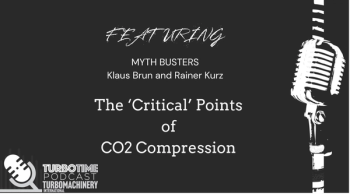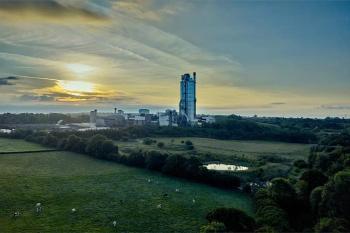
Combining ceramic 3D printing technology with casting
In aircraft engines and industrial gas turbines (IGT), investment cast parts are made of expensive superalloys to withstand the extreme thermal, mechanical, and chemical loads experienced by hot gas path components. For decades, these high-value parts have been made through a labor-intensive, multi-step lost-wax investment casting process. This approach requires twelve separate steps to produce finished castings. Given the time and investment, many turbine OEMs avoid design changes once a part is in production.
A new category of “digital foundry” technology cuts lead times and costs when creating complex parts. It delivers the convenience and speed of ceramic 3D printing to create the molds, with the precision of investment casting. It is ideal for turbine parts due to the feature resolution, overall build level, and ability to produce parts at production volumes.
Compared to traditional investment casting, this technology is said to lower the cost of manufacturing parts by over 50% and decrease lead times for new or modified parts by a factor of ten. The more complex the part, the greater the reduction in cost and lead time. It avoids up-front investment in hard tooling. This automated, digital printing technology is engineered to produce parts that are equivalent to those using traditional investment casting in properties, surface finish, and dimensional accuracy.
The global investment casting market size was estimated at $20.99 billion in 2020 and expected to reach $31.07 billion by 2027 according to Research and Markets.
“Today, the overriding goal of aircraft jet engine and IGT manufacturers is to continue to seek new ways to incrementally increase turbine efficiency. However, even large OEMs are leery of designing new parts that require an investment of millions of dollars for new tooling when a part is unproven,” says Suman Das, founder and CEO of DDM Systems, an Atlanta, GA-based manufacturer of complex metal components for diverse industries.
The company’s Digital Foundry can produce optimized, 3D-printed “ready to pour” ceramic shells based on more than twenty-five patents covering equipment and methods in half a dozen countries. Once the molds are created, traditional investment casting techniques are used to create parts in production quantities.
“The first step is to take a customer-supplied CAD model and use it to design, and then 3D print it to create ceramic shells with integrated cores that are ‘ready to pour.’ There is no up-front investment in hard tooling and no patterns are required. The shells are poured utilizing the usual investment casting methods with unprecedented speed and precision in production volumes,” explains Das.
The process used to create the ceramic shell is called LAMP (Large Area Maskless Photopolymerization). The technology uses a ceramic resin that is cured with UV light to produce shell molds with integrated cores, layer-by-layer. In LAMP, the 3D “printer head” projects images in ultra-violet light onto the resin, causing it to solidify in patterns corresponding to slices of the shell.
The ceramic structures that result can achieve the high level of detail expected of investment casting cores and molds. Once the ceramic shells are printed, they must go through a thermal processing step using well-established techniques for firing ceramics. DDM possesses trade secrets related to the ceramic formulation and firing.
According to Das, there is a reduction in costs since the LAMP process eliminates seven of the twelve steps typically required to produce a traditional investment casting shell. These seven steps account for 90% of all the sources of scrap and approximately one-third of the total manufacturing cost of producing an investment casting. With the 3D printing technology, the ceramic shell is made in a single step.
The LAMP machine has an adjustable build platform that can be configured to 24x24x20 in. (600mm x 600mm x 500mm) for production scale. This is the largest print platform with the finest feature resolution available in the industry for ceramic 3D printing utilizing UV-cured resins.
With this approach, a Digital Foundry can respond to part design changes or begin casting new parts in as little as ten days. At a traditional investment casting foundry, the lead time for first parts can take up to 52 to 80 weeks for the most sophisticated, high-performance castings. Jet engine and IGT manufacturers can cast a range of design variants to conduct qualification and “rainbow wheel” tests to optimize the design of blades, inlet guide vanes (IGVs), housings, shafts, and other hot gas path parts.
The process can produce parts in standard air-melt steel, aluminum, and vacuum-melt nickel alloys. Air-melt Alloys currently qualified include Stainless Steel 304, 316, 17-4 PH, 15-5 PH, and Austenitic Steel CF3M (wrought equivalent SS316); S7 Tool Steel; Aluminum A356 and A357; and Air-Melt Inconel 625. Vacuum-melt alloys currently qualified include IN 718, IN 713LC, Rene 141, and CMSX-4.
Newsletter
Power your knowledge with the latest in turbine technology, engineering advances, and energy solutions—subscribe to Turbomachinery International today.





